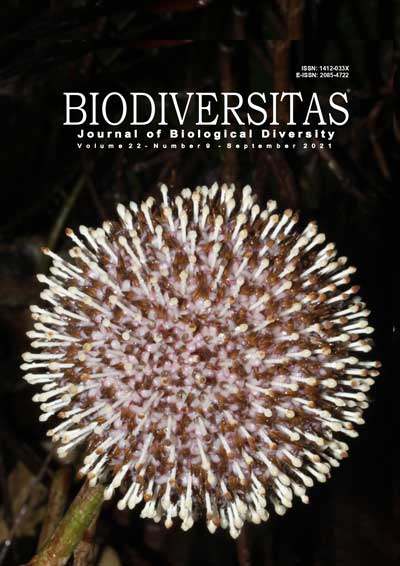Morphological characteristics and flavonoid accumulation of Echinacea purpurea cultivated at various salinity
##plugins.themes.bootstrap3.article.main##
Abstract
Abstract. Choirunnisa JP, Widiyastuti Y, Sakya AT, Yunus A. 2021. Morphological characteristics and flavonoid accumulation of Echinacea purpurea cultivated at various salinity. Biodiversitas 22: 3716-3721. Purple coneflower (Echinacea purpurea (L.) Moench) is an introduced medicinal plant from North America. E. purpurea has high morphological characteristics on stems, leaves and flowers. This plant has not much cultivated as a raw material for traditional medicine in Indonesia due to not much information about flavonoid accumulation of E. purpurea in this country. The purpose of this research was to study morphological characteristics from three accessions of E. purpurea cultivated with various salinity and to select E. purpurea accessions that have high flavonoid accumulation. This study design using a factorial Completely Randomized Design (CRD). The first factor is 3 accessions of E. purpurea (E1; E2; E3). The second factor is 4 levels of CaCl2 (0 ppm; 2500 ppm; 5000 ppm; 10000 ppm). The study was conducted by observing the morphological characteristics of stems, leaves flowers, and herb extract and flavonoid accumulation were analyzed using SPSS. The results demonstrated that morphological characteristics are easy to observed on leaf shape and flower color. The highest herb extract with 10.043% and flavonoid accumulation with 0.510% were in accession 2 with the addition of CaCl2 concentration of 10000 ppm. This study concludes that there are morphological characteristics of E. purpurea cultivated at various salinity and the highest CaCl2 concentration can increase with significance to herb extract and flavonoid accumulation.
